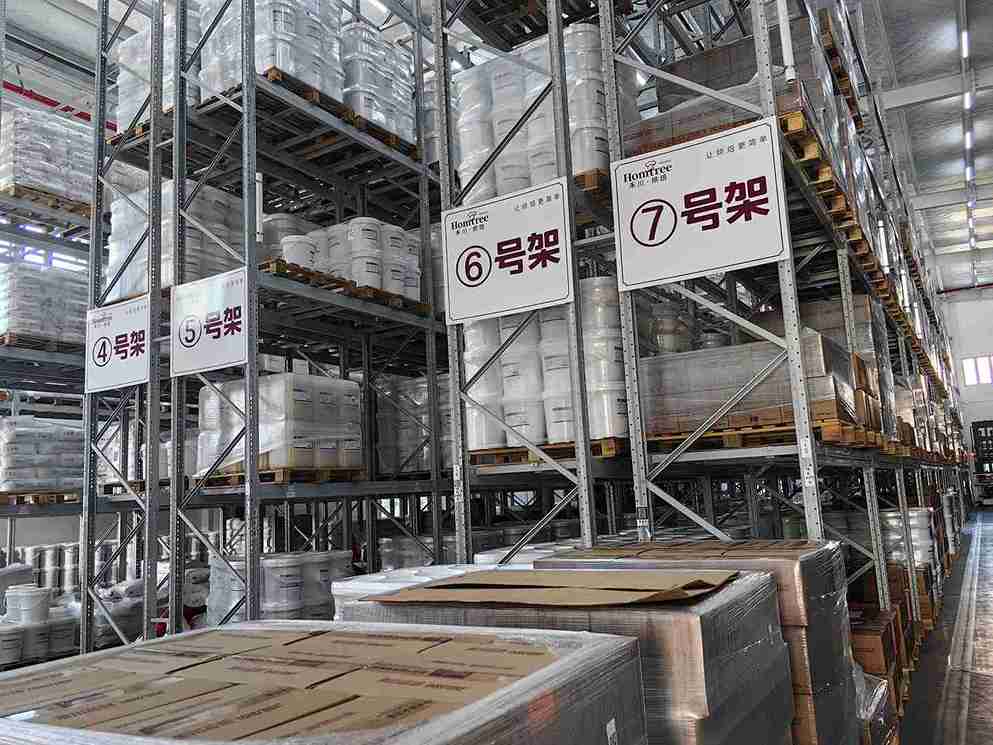📐 "First 50 Enterprise Queries Get Custom 3D Warehouse Design" Plan

Introduction: The Critical Role of Industrial Racking for Cold Storage Operations
In the demanding world of temperature-controlled logistics, industrial racking for cold storage isn’t just a shelving solution—it’s the backbone of efficient, safe, and profitable operations. Unlike conventional warehouses, cold storage facilities face sub-zero temperatures, extreme humidity, and rigorous sanitation requirements, making standard racking systems inadequate.
Choosing the right industrial racking for cold storage ensures:
✔ Maximized storage density to reduce costly freezer space waste
✔ Superior durability against corrosion, ice buildup, and metal fatigue
✔ Compliance with food safety and OSHA standards
✔ Optimized workflow for faster loading/unloading in freezing conditions
This definitive guide explores the top industrial racking systems for cold storage, their engineering advantages, real-world applications, and expert selection criteria to help businesses make high-ROI investments.

H1: Why Standard Warehouse Racking Fails in Cold Storage Environments
H2: Metal Brittleness in Sub-Zero Conditions
Most industrial racking for cold storage uses specialized steel alloys because conventional materials become brittle below -20°F. Case studies show:
-
ASTM A36 steel loses 30% impact resistance at -40°F
-
Galvanized racking beams maintain integrity where powder-coated systems crack
H2: Condensation Warfare: Rust Never Sleeps
Daily defrost cycles create relentless moisture exposure. Leading industrial racking for cold storage combats this with:
-
Hot-dip galvanization (5x thicker than electroplating)
-
Epoxy-polyester hybrid coatings that resist -60°F to 120°F thermal cycling
H2: The Weight Challenge of Frozen Goods
A pallet of frozen beef weighs 2,800 lbs vs. 1,200 lbs at ambient temps. Top-tier industrial racking for cold storage accommodates this with:
-
12-gauge structural steel uprights (vs. 14-gauge in standard systems)
-
Triple-locked beam connectors to prevent load shift during forklift impacts
H1: The 5 Best Industrial Racking Systems for Cold Storage (Ranked by ROI)
H2: 1. Cold-Optimized Selective Pallet Racking (85% of Facilities)
Industrial racking for cold storage often starts with reinforced selective systems because they balance accessibility with durability.
H3: Engineering Breakthroughs for Freezer Use
-
Argon-shielded welds prevent brittle fracture points
-
Closed-back upright designs block icy airflow between bays
-
Non-slip beam coatings reduce pallet slippage risks
H3: Who Wins With This System?
-
Pharmaceutical distributors needing FDA-compliant FIFO access
-
Seafood processors with mixed SKU storage requirements
Pro Tip: Specify 6″ beam overhang for safer pallet placement when workers wear thick gloves.
H2: 2. Polar-Grade Drive-In Racking (60% More Pallets/SqFt)
For facilities storing 3+ months of inventory, this industrial racking for cold storage eliminates aisles via guided forklift lanes.
H3: Cold-Specific Enhancements
-
Heated guide rails prevent ice-induced forklift drift
-
Impact-resistant column guards at every 8′ interval
-
Thermal break pads between uprights and floor
H3: Ideal Users
-
National frozen food distributors (20,000+ pallet capacity)
-
Government emergency food reserves
Case Study: *A Tyson Foods facility reduced energy costs 18% by converting to drive-in industrial racking for cold storage that allowed higher stacking in existing freezer space.*
H2: 3. Arctic Push-Back Racking (The Frozen FIFO Solution)
A game-changer for industrial racking for cold storage needing both density and product rotation.
H3: Winterized Design Features
-
Stainless steel wheel bearings that won’t seize at -30°F
-
Dual-angle inclined rails (5° for -0°F zones, 7° for -20°F)
-
Laser-aligned transfer carts for smooth pallet transition
H3: Top Applications
-
Dairy cooperatives managing 60-day shelf life products
-
COVID vaccine storage hubs
H1: The Hidden Costs of Cheap Industrial Racking for Cold Storage
H2: The 5-Year Total Cost Analysis
| Cost Factor | Economy Racking | Premium Cold Racking |
|---|---|---|
| Energy Waste | $18,000/yr (poor air circulation) | $6,000/yr |
| Repairs | $9,500/yr (rust replacement) | $1,200/yr |
| Product Loss | 3.2% (from collapsed loads) | 0.4% |
Data Source: 2023 Cold Chain Warehouse Benchmark Report
H1: Future-Proofing Your Industrial Racking for Cold Storage
H2: The Robotics Readiness Factor
Next-gen industrial racking for cold storage now includes:
-
Embedded RFID tags in uprights for automated inventory drones
-
Forklift guidance grooves compatible with autonomous vehicles
H2: Climate Change Resilience
New industrial racking for cold storage designs account for:
-
Wider temperature swings (deeper galvanization layers)
-
Increased storm frequency (seismic bracing as standard)
Conclusion: Smart Selection of Industrial Racking for Cold Storage Pays for Itself
The right industrial racking for cold storage system isn’t an expense—it’s a profit multiplier that:
✓ Reduces energy costs through optimized airflow
✓ Minimizes product loss via engineered safety features
✓ Extends equipment lifespan 2-3x over standard racking
Actionable Next Step: Request a free cold storage racking audit from [Company Name] to identify wasted space and safety risks in your current setup.
FAQs
1. How often should industrial racking for cold storage be inspected?
Quarterly formal inspections plus weekly visual checks for ice damage and rust hotspots.
2. Can industrial racking for cold storage handle palletized liquids?
Yes, but requires containment decks and 12″ beam overhangs to prevent barrel rupture.
3. What’s the lead time for custom industrial racking for cold storage?
14-20 weeks for Arctic-grade systems due to specialized metallurgy processes.
4. Are there fireproof industrial racking options for cold storage?
Class 1 fire-rated coatings are available but increase costs by 18-22%.
5. How does industrial racking for cold storage impact insurance rates?
FM Global-approved systems can lower premiums by 9-15% due to reduced collapse risks.




